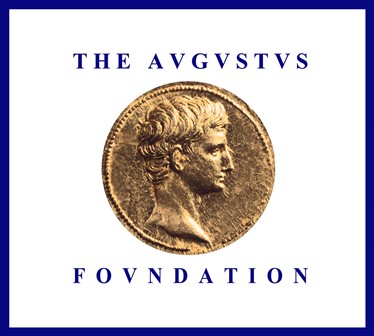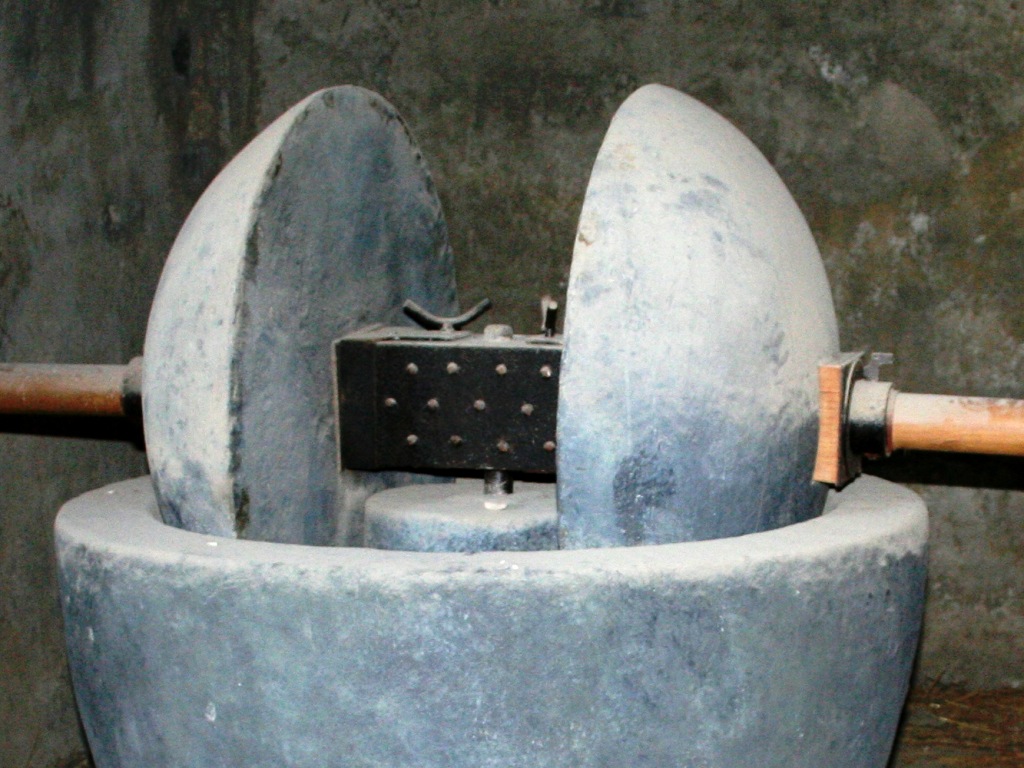
|
 |
- Home
- News
- Team
- Databases
- Conferences
- Oxford Studies on the Roman Economy
- Coin Hoards of the Roman Empire Project
- Affiliated Projects
- Publications
- Bibliographies
- Working Papers
- Links

Olive Oil Production and Trade Bibliography
11-05-2007 | ||||
General : agriculture and techniques A. G. Drachmann, Ancient oil mills and presses, Archaeologisk-kunsthistoriske Meddelelser, I.1 (Kóbenhavn 1932). J.-P. Brun, Le pressoir de Caton, des découvertes de Pompéi à la reconstruction de Beaucaire, in Techniques et sociétés en Méditerranée. Hommage à Marie-Claude Amouretti, J.-P. Brun and P. Jockey, eds. (Paris 2001): 301-11. J.-P. Brun, Le vin et lhuile dans la Méditerranée antique. Viticulture, oléiculture et procédés de fabrication (Paris 2003). J.-P. Brun, Archéologie du vin et de lhuile dans lEmpire romain (Paris 2004). J.-P. Brun, Archéologie du vin et de lhuile de la préhistoire à lépoque hellénistique (Paris 2004). J. J. Rossiter, Wine and oil processing at Roman farms in Italy, Phoenix 35, no. 4 (1981): 345-61. J. J. Rossiter, Pressing issues: wine- and oil-production, JRA 11 (1998): 597-602. M.-C. Amouretti and J.-P. Brun, La production du vin et de lhuile en Méditerranée, Bulletin de correspondance hellénique, Supplement, 26 (Athènes - Paris 1993). D. J. Mattingly, Oil for export? A comparison of Libyan, Spanish and Tunisian olive oil production in the Roman empire, JRA 1 (1988): 33-56. D. J. Mattingly, Regional variation in Roman oleoculture: some problems of comparability, in Landuse in the Roman Empire, J. Carlsen, P. Ørsted, and J. E. Skydsgaard, eds., Analecta romana Instituti danici Supplement, 22 ( 1994): 91-106. D. J. Mattingly, Olea mediterranea?, JRA 1 (1988): 153-61. D. J. Mattingly, Maximum figures and maximizing strategies of oil production? Further thoughts on the processing capacity of Roman olive presses, in La production du vin et de lhuile en Méditerranée, M.-C. Amouretti and J.-P. Brun, eds., Bulletin de correspondance hellénique, Supplement, 26 (Athènes - Paris 1993): 483-98. R. I. Curtis, Ancient food technology (Leiden 2001). F. Benoit, Moulins à grains et à olives de la Méditerranée, in Premier Congrès international de Folklore (Paris 1937) ( 1938):. E. L. Tyree and E. Stefanoudaki, The olive pit and Roman oil making, BiblArch 59, no. 3 (1996): 171. R. Frankel, Catos press: a reappraisal, in Techniques et sociétés en Méditerranée, J.-P. Brun and P. Jockey, eds. (Paris 2001), Hommage à Marie-Claude Amouretti: 313-25. G. G. Fagan, Gifts of gymnasia: a test case for reading quasi-technical jargon in Latin inscriptions, ZPE 124 (1999): 263-75.
J. Remesal Rodríguez, El sistema annonario como base de la evolución económica del Imperio romano, in Le commerce maritime romain en Méditerranée occidentale. PACT 27 (1990), T. Hackens and M. Miró, eds. (Miró 1995): 355-67. E. Rodriguez-Almeida, Bolli anforari di Monte Testaccio, BullCom 84 (1974-1975): 199-248. E. Rodríguez Almeida, Vicissitudini nella gestione del commercio dellolio betico da Vespasiano a Severo Alessandro, MAAR 36 (1980): 277-90. E. Rodríguez Almeida, Il Monte Testaccio : ambiente, storia, materiali (Roma 1984). E. Rodríguez Almeida, Los tituli picti de las ánforas olearias de la Bética (Madrid 1989), Vol. 1., Tituli picti de los Severos y de la Ratio Fisci. P. B. M. A. Aguilera Martín, La Base de Datos Testaccio. Estudis sobre ceràmica antiga, in Studies on Ancient Ceramics. Proceedings of the European Meeting on Ancient Ceramics, (Barcelona 1995): 119-22. J. M. Blázquez Martínez and J. Remesal Rodríguez, eds., Estudios sobre el Monte Testaccio (Roma) (Barcelona 1999), Vol. 1.
M. Corrente, Alcuni esempi di forme economiche nel settore Est del suburbio romano, in Misurare la terra: centuriazione e coloni nel mondo romano. Città, agricoltura e commercio: materiali da Roma e dal suburbio, (Modena 1985 [1986]): 112-18. G. R. Bellini and R. Rea, Note sugli impianti di produzione vinicolo-olearia nel suburbio di Roma, in Misurare la terra: centuriazione e coloni nel mondo romano. Città, agricoltura e commercio: materiali da Roma e dal suburbio, (Modena 1985 [1986]): 119-31. J. J. Rossiter, Wine and oil processing at Roman farms in Italy, Phoenix 35, no. 4 (1981): 345-61 F. De Martino, Economia delloliveto nellItalia romana, PP 45 (1990): 321-47. X. Lafon, Lhuile en Italie centrale à lépoque républicaine. Une production sous-estimée ?, in La production du vin et de lhuile en Méditerranée (Athènes 1993): 263-81. L. Vidman, K obchodu s olivov?m olejem v starav-ke Itálii. (Tschech.m.dtsch.Res.) Zum Olivenölhandel im antiken Italien, Lf 33 (1960): 58-63, 222-28. G. Volpe, Le anfore romane del Museo G. Fiorelli di Lucera. Alcune note sulla produzione olearia e vinaria apula in età tardo-repubblicana, AFLB 25-26 (1982-83): 21-55.
Istria T. Bezeczky, Amphorae and amphora stamps from the Laecanius workshop, JRA 8 (1995): 41-64. T. Bezeczky, The Laecanius amphora stamps and the villas of Brijuni, Philosophisch-Historische Klasse Denkschriften, 261 (Wein 1998). A. Degrassi, Lesportazione di olio e olive istriane nelletà romana, AMSI 56 (1956): 104-12. A. Starac, Napomene o amforama Dressel 6 B. (Osservazioni sulle anfore di tipo Dressel 6 B), in Arheoloska istrazivanja u Istri. (Zagreb 1997), 143-161. Y. Marion and A. Starac, Les amphores, in Loron (Croatie). Un grand centre de production damphores à huile istriennes (Ier-IVe s p.C.) (Bordeaux 2001): 97-125. S. Martin-Kilcher, Les Laecanii et les amphores a huile dIstrie, JRA 13 (2000): 506-09. R. Matijasic, Roman rural architecture in the territory of Colonia Iulia Pola, AJA 86, no. 1 (1982): 53-64. R. Matijasic, Oil and wine production in Istria and Dalmatia in classical antiquity and the early middle ages, in La production du vin et de lhuile en Méditerranée, M.-C. Amouretti and J.-P. Brun, eds., Bulletin de Correspondance Hellénique, Supplément, 26 (Athènes 1993): 247-61. R. Matijasic, Le ville rustiche istriane (bilancio storico-archeologico), in Abitare in Cisalpina. Ledilizia privata nelle città e nel territorio in età romana, Antichità altoadriatiche, 49 (Trieste 2001): 693-711.
M. Beltrán Lloris, El comercio del aceite en el valle del Ebro a finales de la república y comienzos del imperio romano, in Producción y commercio del aceite en la antigüedad (Madrid 1980): 187-224. M. Beltrán Lloris, El aceite en Hispania a través de las ánforas. La concurrencia del aceite itálico y africano, in Producción y comercio del aceite en la antigüedad, (Madrid 1983): 515-49. J. Remesal Rodríguez, Ölproduktion und Ölhandel in der Baetica. Ein Beispiel für die Verbindung archäologischer und historischer Forschung, MBAH 2, no. 2 (1983): 91-112. J. Remesal Rodríguez, La annona militaris y la exportación de aceite bético a Germania (Madrid 1986). E. Rodríguez Almeida, Diffusores, negotiatores, mercatores olearii, BullCom 92 (1987-1988): 299-306. P. Saez Fernandez, Agricultura romana de la Betica, Monografias del Departmento de Historia Antiqua de la Universidad de Sevilla (Sevilla 1987), Vol. 1.. J. M. Blázquez, La exportación del aceite hispano en el imperio romano. Estado de la cuestión, in Producción y commercio del aceite en la antigüedad, (Madrid 1980): 19-46. J. M. Blázquez, The latest work on the export of Baetican olive oil to Rome and the army, G |  |
Webdesign, databasedesign: Miko Flohr, 2010-2024. Content: OXREP, 2005-2024.